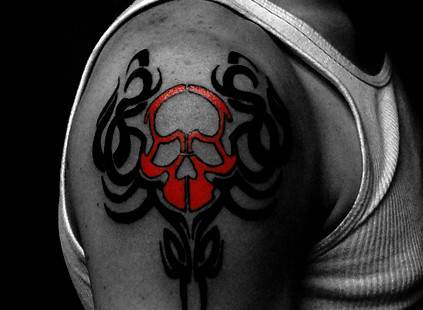
THE handmade TABLE
LIVING BEAUTIFULLY WITH CRAFTED OBJECTS
(Vogue Living Australia, November/December 2009 page 67.)
We have had the ipod, the iphone, the ipad and now we have the imove, the latest in ceramic development. Work truly fit for the 21st century � it aims to go green, handcrafted with a difference and it stands proud amongst its industrial white ware counterparts.
The designer maker is an inspirational figure in ceramics, whose work meets all the design criteria for added value in the 21st century; ceramics for the conscious consumer under the revised banner of The New Luxury. Work that is innovative, creative and a manifestation of east meets west (products developed in the context of globalisation with reference to the creolization of cultures). It brings life to the dinner table as a welcomed alternative to the old boring white ware. It is not just the low-fired translucency that make the work special - it's the whole approach. a Design aesthetic for the 21st century.
I new it was going to happen, sooner than later, and here it is. Work produced with a multifaceted research approach; this is tomorrow's design challenge (in keeping with Elle Decoration's Living /2010 TRENDS). What follows is three of the ceramist's creative and innovative design solutions for producing truly inspirational work for the 21st century. a Design aesthetic for the 21st century. Design approach. He strives to create unique designs that are influenced by traditional Asian aesthetics as well as modern European design. Green is the new gold. He developed a clay body for the 21st century - highly translucent soft paste porcelain that matures at an extremely low temperature. His interest in this new material, for which there are few historical precedents, grows out of a concern for the environment and reducing the carbon footprint of his practice
Why imove. Just yesterday I bought the two magazines mentioned above and featured below. They have for a number of years provided me with relevant information; photo documentation and complimenting text, especially in my quest for innovative design solutions. They also provided the context for appreciating the latest work of Aaron Nelson that much more. After reading the magazines early this morning, I got on-line and visited Carol Epp's blog, where I entered a comment on Aaron Nelson's work, that led to this new post. However to post the comment I had to type-in the following word verification - imove. Hence the specific introduction to the iphone etc. By the way I missed the Artist of the day entry, posted earlier on Carol Epp's blog (featuring Aaron Nelsons work) - hence the response to his work on the workshop post . 
Vogue Living (Australia) November/December Issue - The cover and leading editorial contribution, All in hand, features the organic beauty of things handmade; the 6 page beautifully styled photo-documentation lists amongst others the work of Janet De Boos (image above) , Sue Jones's Limoges porcelain beaker decorated by David Middle Brook and Janet Mansfield (too mention only a few well-known names) Is the tide is turning. Elle Decoration (UK edition) no210 February 2010 - highlights 2010 Trends.The article is titled This is tomorrow. A new year; new start...but what does the future hold? Although tomorrow is never ours to know; the five dominant influences that will shape our homes, lives and the world of design can be predicted....What matters is what lasts (Michelle Ogundehin, February 2010, Elle Decoration 55. ). The pointers are;
Handcrafted ware. He has created an alternative to white-ware (that flooded the market with a serious impact on our world). Low fired, highly translucent porcelain pieces, thrown and altered on a wheel using a mould, with a look and feel associated with industrial ceramic ware.
It is the work of AARON Nelson.
Visit Carol Epps' blog and you can obtain details about his planned workshop. He was the artist of the day on Carol Epps Blog and on vitualfunding.com.(condensed version of Epps entry) Should you wish to contact him about his amazing work or about the Medalta International Artists in Residence follow the provided links. Medalta International Artists in Residence and as Artistic Director of the Shaw International Centre for Contemporary Ceramics in Medicine Hat, Alberta.
This is Tomorrow - The handmade TABLE - living beautifully with Crafted Objects.
My students, participants in workshop presentations and followers of my blog have always appreciated my insight into ceramic design trends and developments. However they often state that I do not present clear cut answers. It is because we require a multifaceted research approach to complex challenges in our quest for innovative design solutions in the 21st century. It is becoming increasingly difficult to find creative solutions when there are so many uncertainties on a global front.Two magazines have provided constant inspirational articles that address contemporary design trends from a consumer perspective. They are Elle Decoration (UK Edition) and Vogue Living Australia (Featured below the next image). Both magazines appoint world leading research consultants to provide relevant and insightful material annually. For their 2010 trends skip the next paragraph.

- Quiet Design; sustainability & humility. Novelty is over. too much choice is confusing. Quiet design and humble classics are the answer.
- Experimentation; playful humour. The future of the design industry also lies in the power of play, what's crucial is that fear doesn't get in the way.
- Intelligent luxury; elegant & indulgence. 2010 will see the emergence of a smarter kind of indulgence, one in which luxury and a concern for the environment unite.
- Idling. Take time out - Anything that balances left brain, with right brain thinking
- Purification. Saunas. Steam rooms at home. Still water; water features. The ritual of bathing.





























